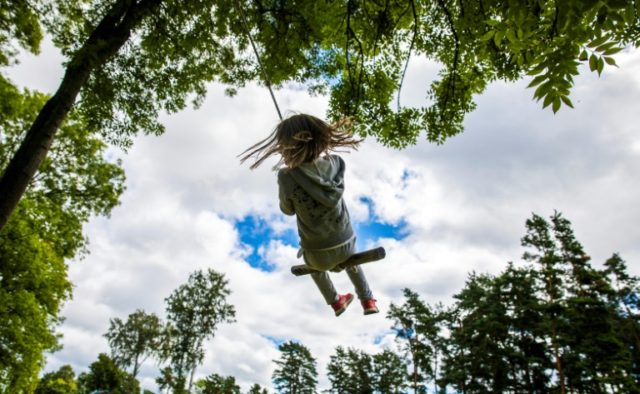Oslo (AFP) – “Norway needs more children! I don’t think I need to tell anyone how this is done,” Norway’s prime minister said cheekily, but she was raising a real concern.
Too few babies are being born in the Nordic region.
The Nordic countries were long a bastion of strong fertility rates on an Old Continent that is rapidly getting older.
But they are now experiencing a decline that threatens their cherished welfare model, which is funded by taxpayers.
“In the coming decades, we will encounter problems with this model,” Prime Minister Erna Solberg warned Norwegians in her New Year’s speech.
“There will be fewer young people to bear the increasingly heavy burden of the welfare state.”
In Norway, Finland and Iceland, birth rates dropped to historic lows in 2017, with 1.49 to 1.71 children born per woman. Just a few years earlier, their birth rates hovered close to the 2.1 level required for their populations to remain stable.
“In all of the Nordic countries, birth rates started dropping in the years after the 2008 financial crisis,” University of Oslo sociologist Trude Lappegard told AFP.
“The crisis is over now but it’s still falling.”
From Copenhagen to the North Cape, from Helsinki to Reykjavik, demographics across the Nordics reveal two things: there are fewer large families, and women are waiting longer before having their first child.
There’s no single explanation, but financial uncertainty and a sharp rise in housing costs are seen as likely factors.
In the long term, this means there will be fewer people of working age to pay taxes that fund the generous state welfare systems.
These systems pay for, among other things, lengthy parental leaves, which in Sweden can last up to 480 days.
– Paying for pregnancies –
Experts present differing diagnoses and prescriptions to remedy the situation.
In Norway, one economist concerned about the effect the slowing demographics will have on economic growth has suggested giving women 500,000 kroner (50,000 euros, $58,550) in pension savings for each child born.
Another has suggested that, on the contrary, women in Norway who reach the age of 50 without having had a child should be paid one million kroner, since children also cost society a lot.
Finnish municipalities have already decided to loosen their purse strings to encourage locals to get busy under the covers.
The town of Miehikkala, home to 2,000 people, is offering 10,000 euros for each baby born and raised in the municipality.
“The number of childless individuals is growing rapidly, and the number of women having three or more children is going down. This kind of fall is unheard of in modern times in Finland,” said Anna Rotkirch, a family sociologist at the umbrella organisation Finnish Family Federation.
In Denmark, Copenhagen has meanwhile turned its attention to men, who are in less of a hurry to become parents than women, with a campaign aimed at raising awareness about how sperm quality declines with age.
– Immigration boost –
The Nordic region already boasts a wealth of family-friendly initiatives, such as flexible working hours, a vast network of affordable daycares and generous parental leave systems.
But when all that is still not enough to encourage people to have more children, immigration can be a lifeline — or a threat, depending on the point of view.
Sweden may have a falling birth rate, but it still comes in second in the EU behind France with 1.85 children born per woman in 2016.
That is largely due to Sweden’s decades-long history of immigration: immigrant women tend to have more children than the average Swede.
With 2.6 children per woman in recent years, the town of Aneby in southern Sweden has one of the highest rates in the country, a phenomenon attributed to the fact that it opened its doors to immigrants two decades ago.
“Aneby welcomed around 225 Eritreans in the early 1990s and just after that (it took in) refugees from the Balkans. 1994 was a demographic record for the town,” local official Ola Gustafsson told AFP.
But population growth among minorities has also fuelled fears.
A former justice minister in Norway, Per-Willy Amundsen of the populist far-right, made headlines when he called for family allowances to be reduced after a third child.
His stated goal was to stop Somalis who, he said, had a higher “birth production” rate than “ethnic Norwegians”.

COMMENTS
Please let us know if you're having issues with commenting.